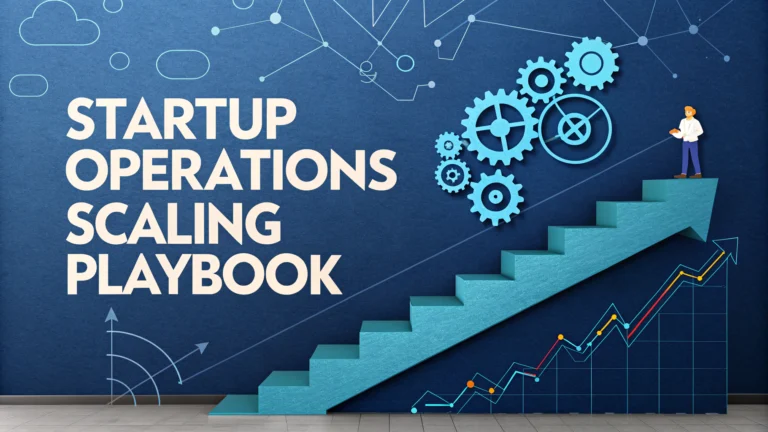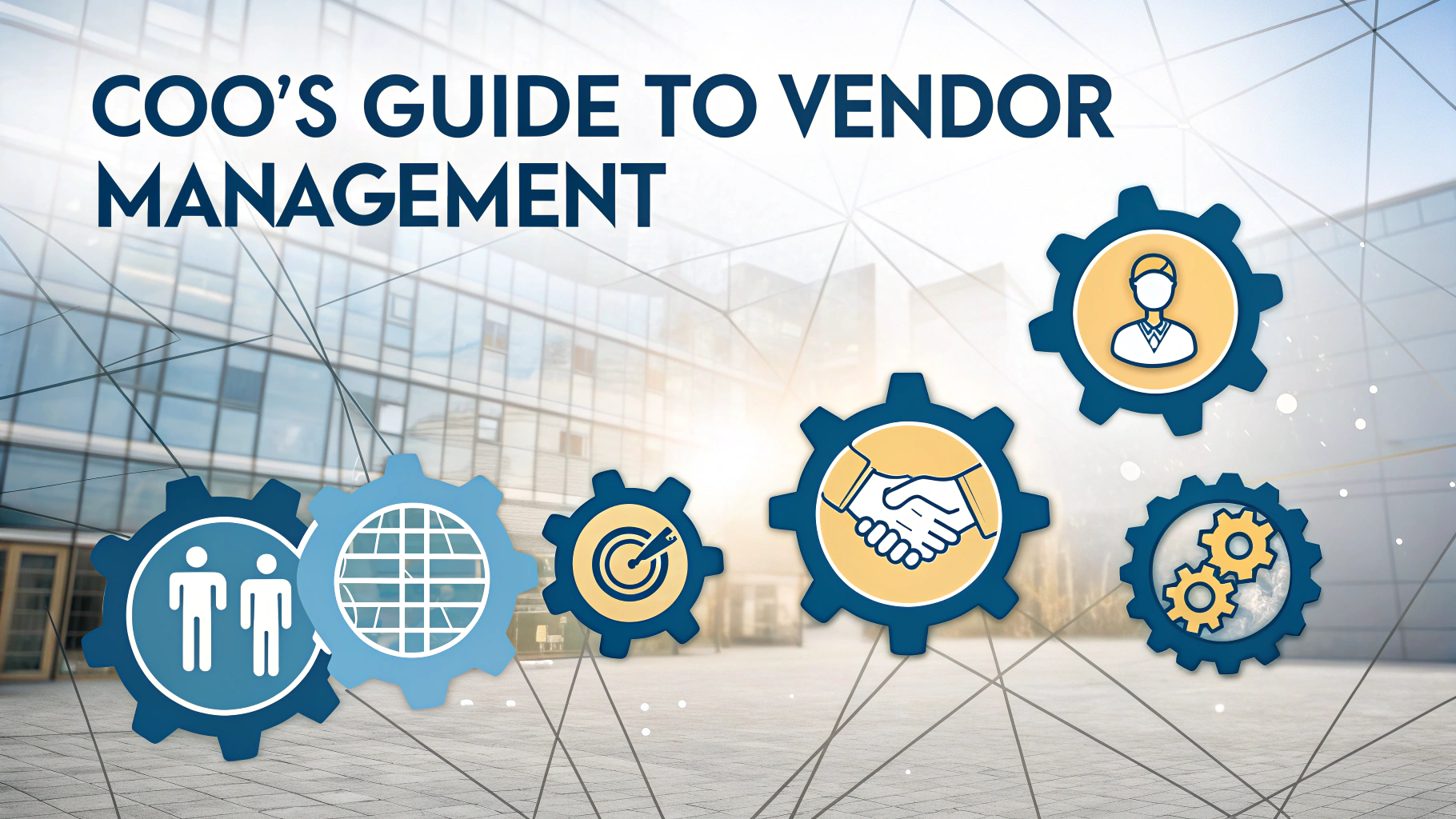Growing a startup requires careful orchestration of operations, resources, and team dynamics – this guide offers proven strategies for scaling effectively.
Operations scaling directly impacts your startup’s ability to maintain quality while handling increased demand and complexity.
Let’s explore practical steps to build robust operational frameworks that support sustainable growth.
Key Areas for Operational Scaling
- Process Documentation
- Team Structure
- Technology Infrastructure
- Customer Service Systems
- Supply Chain Management
Building Your Operations Framework
Start by mapping current processes and identifying bottlenecks that could hinder growth.
Essential Documentation
- Standard Operating Procedures (SOPs)
- Employee Handbooks
- Training Materials
- Emergency Response Plans
Technology Stack Selection
Choose scalable tools that integrate well and support your growth trajectory.
| Function | Recommended Tools |
|---|---|
| Project Management | Asana, Monday.com, Jira |
| Communication | Slack, Microsoft Teams |
| CRM | Salesforce, HubSpot |
Team Structure and Scaling
Design your organizational structure to accommodate growth without frequent restructuring.
Key Roles to Consider
- Operations Manager
- Process Improvement Specialist
- Quality Assurance Lead
- Team Leads for each department
Automation Opportunities
Identify repetitive tasks that can be automated to improve efficiency.
- Customer onboarding processes
- Data entry and reporting
- Invoice processing
- Email responses
- Social media management
Metrics and KPIs
Track these essential metrics to measure operational effectiveness:
- Customer Satisfaction Score (CSAT)
- Employee Turnover Rate
- Process Cycle Time
- Error Rates
- Resource Utilization
Common Scaling Challenges
Be prepared for these typical hurdles:
- Communication breakdowns
- Process bottlenecks
- Quality control issues
- Team burnout
Moving Forward: Your Next Steps
Start with a thorough audit of current operations to identify immediate improvement opportunities.
Create a phased implementation plan that prioritizes high-impact, low-effort changes.
Consider working with operational consultants for specialized guidance – contact the Startup Operations Association (startupops.org) for vetted recommendations.
Risk Management
Implement comprehensive risk management strategies to protect your scaling operations.
Critical Risk Areas
- Data Security
- Financial Controls
- Compliance Requirements
- Vendor Dependencies
- Market Changes
Financial Planning for Scale
Develop robust financial models that account for operational growth costs.
- Infrastructure investments
- Hiring and training budgets
- Technology upgrades
- Working capital requirements
- Emergency funds
Quality Management Systems
Establish quality control mechanisms that scale with your growth.
Key Components
- Quality metrics dashboard
- Regular audits
- Customer feedback loops
- Continuous improvement processes
Building a Learning Organization
Foster a culture of continuous improvement and knowledge sharing.
- Regular training programs
- Knowledge management systems
- Cross-functional collaboration
- Innovation incentives
Sustaining Growth Through Operational Excellence
Successful scaling requires constant attention to operational fundamentals while maintaining flexibility for future changes.
Focus on building systems that can evolve with your business needs and market demands.
Remember that operational excellence is a journey, not a destination – regularly revisit and refine your frameworks to ensure continued effectiveness.
Stay connected with industry peers and continue learning from others’ experiences through professional networks and communities.
FAQs
- What is the primary role of a COO in a scaling startup?
A Chief Operating Officer in a scaling startup is responsible for overseeing daily operations, implementing growth strategies, managing team expansion, and ensuring operational efficiency while working closely with the CEO to execute the company’s vision. - How do you effectively manage rapid team growth during the scaling phase?
Manage rapid team growth by establishing clear organizational structures, implementing standardized hiring processes, creating comprehensive onboarding programs, defining role responsibilities, and developing scalable management systems. - What key metrics should a startup COO track during scaling?
Essential metrics include customer acquisition costs (CAC), lifetime value (LTV), burn rate, revenue growth rate, operational efficiency ratios, employee productivity metrics, customer churn rate, and unit economics. - How do you build scalable operational processes without sacrificing startup agility?
Build scalable processes by documenting core procedures, implementing automation where possible, maintaining flexibility in systems, regularly reviewing and optimizing workflows, and ensuring processes can handle 10x growth. - What are the critical systems and tools needed for scaling operations?
Essential systems include project management software, HR management systems, customer relationship management (CRM) tools, financial management software, communication platforms, and data analytics tools. - How do you manage cash flow during rapid scaling phases?
Manage cash flow by implementing robust financial forecasting, maintaining adequate runway, optimizing working capital, establishing clear budget controls, monitoring burn rate, and maintaining strong relationships with investors and financial partners. - What are the common operational challenges during international expansion?
Common challenges include regulatory compliance, cultural differences, hiring local talent, establishing local partnerships, managing multiple time zones, maintaining consistent quality standards, and adapting processes for different markets. - How do you balance quality control with rapid growth?
Balance quality control by implementing quality management systems, establishing clear KPIs, maintaining regular audits, providing continuous training, gathering customer feedback, and creating standardized quality assurance processes. - What role should data play in operational decision-making during scaling?
Data should drive decision-making through analytics-based insights, performance monitoring, predictive modeling, customer behavior analysis, operational efficiency metrics, and real-time reporting systems. - How do you maintain company culture during rapid scaling?
Maintain culture by documenting core values, implementing consistent communication practices, establishing cultural onboarding programs, recognizing cultural ambassadors, and regularly assessing cultural health through employee feedback.







